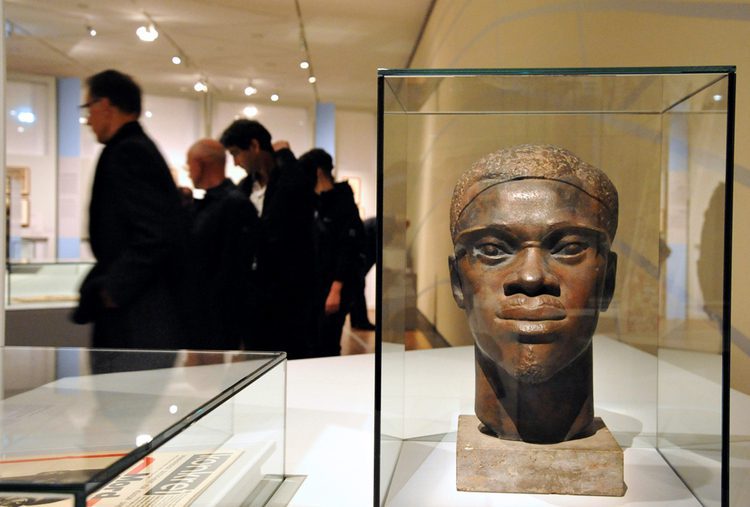Deutsches Historisches Museum, Berlin, Germany
14 Oct 2016 - 14 May 2017

© Deutsches Historisches Museum
For the first time the Deutsches Historisches Museum is presenting a major exhibition, with some 500 objects, dealing with various aspects of German colonialism. On display from 14 October 2016 to 14 May 2017, the exhibition focuses on a topic that has increasingly found its way into the public discourse.
Although the German Empire was one of the main European colonial powers from 1884 until the end of the First World War, it is only in the past few years that Germany’s colonial past has substantially entered public consciousness. The current debates about the recognition of the genocide of the Herero and Nama peoples have not least of all contributed to this renewed interest. The exhibition in the Deutsches Historisches Museum explores the underlying European colonial ideology, which was marked by a feeling of superiority towards the colonial peoples. For this reason the General Act of the Berlin Conference on Africa from 25 February 1885 is found at the very beginning of the exhibition, thus placing German colonialism in its pan-European context. At the conference, representatives of 14 nations did not actually conclude contracts and draw up boundaries to carve up Africa among themselves, but this meeting, under exclusion of African representatives, is now seen as a prime example of imperialist arrogance and a key element in the remembrance of German and European colonialism.
The exhibition shows the multifarious power relations in the colonies, ranging from locally-based alliances to the daily exercise of violence and the wars against the Herero and Nama, culminating in genocide. Even in times of peace the military forces employed the Maxim machinegun to reinforce their rule and bring home the superiority of the Europeans to the colonised peoples. The machinegun was sometimes used to decimate whole groves of trees in a short period of time to engender fear and respect and to leave behind a lasting impression.
Equally complex were the relations between the colonies and the German Empire. The African, Asian-Pacific and German players pursued their own aims and explored their own options for taking action. The exhibition sheds light on the motives of the missionaries, administrators, military forces, settlers and merchants on the German side as well as the interests of the colonised people. It examines the question of whether and to what degree the perspectives of the colonised have been taken into account in the historical tradition and to what extent this stands in contradiction to the huge body of collections and archives that were established during the colonial period and that reinforced the power structures. Studies explored in the exhibition – Robert Koch’s research, for example, or the introduction of economic reforms in the cultivation of cotton as well as discussions about the ban on mixed marriages – all help to illustrate the scope of action available to the local players with their sometimes divergent interests.
The unmitigated colonial consciousness did not disappear after 1919, although Germany was forced to surrender its colonies as a result of the defeat in the First World War and the provisions of the Treaty of Versailles. The exhibition devotes considerable room to this controversial remembrance of the colonial past, while artistic and societal perspectives provide insight into the present state and legacy of German colonialism in the territories that were affected by it and in present-day Germany. In addition to texts in German and English, the exhibition offers most of the information in Braille, Easy Language and video sign language. So-called “Inclusive Communication Stations” (ICS) invite visitors to participate in the process of taking in the different thematic areas of the exhibition.
.